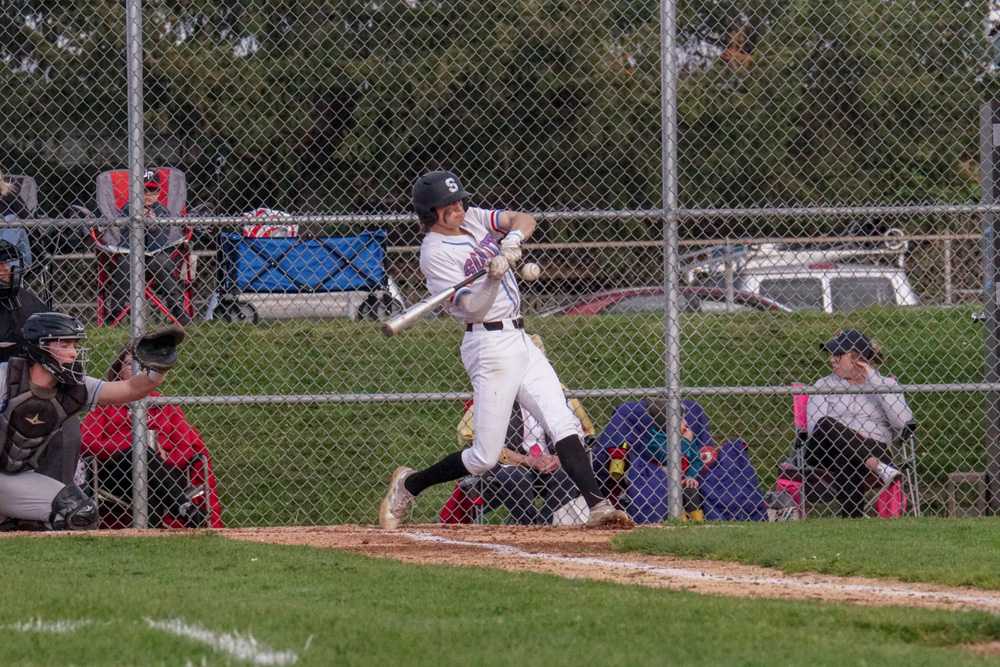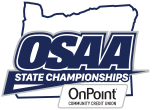
Seventeen years ago, Oregon State University, playing with a ton of homegrown talent on its roster, won its first of back-to-back NCAA Division I national baseball titles.
Believe it or not, the talent now being groomed on high school fields across Oregon may be the best it’s ever been.
“I think in some ways you could call this a ‘Golden Age’ of Oregon baseball,” said Jeff Miller, the longtime head coach at Knappa HS. “Players and coaches have more information available, are more refined, have played more games and the pool of high level talent is deeper now than at any previous time. You can easily find great players and coaches from our Metropolitan areas to our smallest of towns in Oregon today.”
Back in the mid-2000s, local talent, from Jacoby Ellsbury of Madras to Cole Gillespie of West Linn, and from Central Catholic’s Kevin Gunderson to Newberg’s Dallas Buck and Oregon City’s Jonah Nickerson, helped establish Oregon State as a college baseball dynasty. The Beavers hosted their first Regional in 2005, and won Regional and National Championships in 2006 and 2007.
Around the same time, George Fox was winning a Division III national title (2004) and Linfield was gunning for its own DIII crown in 2008, both with rosters teeming with local talent.
That may have been a “Gilded Age,” but what we are witnessing this year may indeed be golden.
According to our reporting, almost 90 Oregon schoolboys have made commitments to play baseball in college. That’s 30 percent more than last year. Of that number, 36 are pledged to Division I programs, 50 percent more than a year ago. Ten, including four in the senior class, are headed to Oregon State. Eleven more, including a whopping seven seniors, will play for the Oregon Ducks. The talent pool is so deep that Division I programs in California, Washington and even Michigan are picking up prospects from the Beaver State.
“The talent in our state is outstanding!” exclaimed John Arnston, the former championship-winning coach at Clackamas, now the athletic director at the school. “Especially on the mound. I think the top end pitching in the state is as deep and as good as I can ever remember. We have two pitchers alone in the Portland/Metro who could be first round picks! That is crazy! Part of me thinks I got out at a good time and part of me really wants to go out and compete against those guys!”
The possible first rounders Arnston referenced are Noble Meyer of Jesuit, a right hander who has signed with Oregon; and Paul Wilson of Lakeridge, a southpaw pledged to Oregon State. Both are tall, well-built athletes who throw mid to upper 90s. They could both be first-round picks when the MLB draft convenes in July. In 2020, when Mick Abel was selected in the first round, he became only the seventh Oregon high school product ever picked in Round 1 and the first in 26 years. The idea that the state could have two this year is staggering.
“I think we have had good baseball in Oregon for a long while,” said JJ Winkle, who succeeded Arnston at Clackamas. “I do believe we are much deeper today, though. I can recall maybe having a handful of Division I players in the whole state at all levels 20-25 years ago. Hell, we have more than a few teams that have that on their rosters now! I am also impressed with the amount of young talent spread throughout the state (non-seniors). What is more amazing to me is the depth of really good pitching we have in the state. Back years ago, this was one of the main reasons why most leagues went to weekly series; to stay away from strategic pitching matchups. There weren't too many teams that had more than one or two solid pitchers. Not the case today. There are several teams that are three and four deep.”
Take Jesuit, for example. The Crusaders not only have Meyer as a quality arm; they also boast Ty Alleman (Santa Clara) and Ryan Cooney (Oregon, to play INF) in a rotation that brings the heat. Add 3B Levi Jones (Oregon State), catcher Brock Leitgeb (Michigan) and OF Kainoa Santiago as Division I recruits and it’s no wonder that Jesuit, which is 14-4 overall and 12-1 against Oregon competition, has been ranked No. 1 in Oregon and nationally ranked all-season long.
Jesuit’s not the only example of overflowing talent. Defending 6A champion West Linn has four hurlers topping 88 mph, including senior Drew Talavs (Oregon State) and junior Gabe Howard (Oregon). The Lions also have junior catcher Ryan VandenBrink, an Oregon State recruit who’s been batting cleanup for West Linn since he was a freshman.
Lakeridge has talent, Sunset has talent. Heck, South Salem, which was 6-18 a year ago, has three Division I underclassmen on its roster.
High-level talent isn’t confined to the 6A schools or metropolitan areas, either. Kennedy, South Umpqua, Cascade Christian and Scappoose are among the smaller schools boasting star power this spring.
“There is no doubt that this year, along with last year, might be the most loaded talent group the state has ever seen in baseball,” noted Todd Peterson of McMinnville. “The amount of elite arms around the state is staggering.”
“I'm fortunate to have been coaching long enough to have players whose fathers played for me,” said Lennie Wolfe, the longtime head coach at Warrenton.” It does give me a rare view of Oregon high school athletics. That said, I'm willing to say this could be the Golden Age of baseball in Oregon.
“The success of Northwest collegiate programs in the past 20 years, with rosters that had a solid core of Oregonians, has increased interest in our high school players,” Wolfe continued. “I also look at the significant improvement of NWACC programs as a factor. Their facilities have improved dramatically, and the level of coaching there, combined with lower college costs at the JUCO level, has created an attractive option for Oregonians wanting to play after high school.
“One can't ignore the development of high school and community baseball facilities. I began coaching in 1984, before Turface was available, and only a few coaches, notably Randy Brack at North Marion, had the foresight and/or ability to add that to their fields. Now such products are routinely used, and our knowledge of how to make wet fields playable is much improved. Guys like Ryan Starwalt at Crescent Valley introduced the concept of strategically utilizing turf on portions of fields rather than lamenting the fact that a fully-turfed field probably wasn’t affordable. More turf facilities exist now. Today’s players are able to play far more games than in the past. In my first year as a head coach in 1988 we were able to get just 19 games in due to weather, and that was in Southern Oregon. Last year was the wettest spring in Oregon's recorded history, and my team on the Oregon Coast played 25 games. That couldn't happen 40 years ago. Additionally, more schools have built dedicated indoor facilities, so practice isn't limited to wiffles in the gym. Increased practice and playing time definitely makes a difference.
The abundance of player talent in the state doesn’t necessarily make for better baseball, some coaches asserted.
“I’ve given it some thought and I think that probably, yes, right now, we’re seeing some of the best players that have come through Oregon,” said Dave York, the longtime coach at Umpqua Valley Christian. “But what I’m torn over is the fact that the actual baseball isn’t better. I know this might sound like the ‘old guy’ comment, but I can’t think of another year like this one where there are only a handful of quality teams in each classification. I’ve sat through some really bad games and watched some bad baseball. So I’m a bit conflicted over things.
“I do see several really good players on different teams. Jesuit being ranked is no joke and good for the state. But I don’t see the depth of ’teams’ being as good as it used to be, nor the quality of baseball being played as well as it used to be. I’ve watched other classifications than ours and I see the same thing. There are good pieces on teams but not great teams. The depth of great teams just isn’t there right now.”
“As we specialize in single sports and the game becomes more expensive to play for families, we have lost out on some talent overall in baseball by leaving some kids behind at a young age,” Miller added. “Also, as the game is no longer a part of the fabric of many people's lives today, I see instincts and creativity for the game not gaining ground at the same rates as pure skills, which takes away from the game to some degree.”
“I do worry that several communities, especially rural ones, no longer field summer programs--not an issue limited to Oregon, by the way--and certainly not everyone can afford to play on the travel teams that exist,” Wolfe said. “If baseball becomes more like the Club Soccer model of the 1980s, I worry that this could be a short-lived age. I'm also not willing to say that the players are inherently better than the players of the past 40-50 years, but there's no arguing that this group is pursuing their dreams in numbers we've not seen before.”
“I do not believe we are in a golden age,” asserted Silverton’s Easton Bennett. “Baseball has a talent barrier because of the specialization of players nowadays. So yes, we do have more talented players, but only because they are specialized in that sport and have been since probably about 7-8th grade, and some earlier. I think we see this in Oregon a little heavier because, unlike places like California, Florida, Arizona, etc...We lack the ability to play baseball year-round here. The guys who are getting the extra training here are just better here, and it's by a lot. “
Given the opinions expressed in this article, what do you say? Are we in a Golden Age of Oregon High School baseball? What do your eyes tell you? High school coaches who have been around for 30 plus years seem comfortable asserting that if THIS isn’t the Golden Age, it at least belongs in the discussion.
“Golden Age?” Wolfe wondered aloud “That requires some longevity: If this trend continues, then yes it is.”
“Overall, I hesitate to call this, or any age, a ‘Golden Age’ out of respect for the past greats and for hope for all of the greats who are certain to come,” Miller said. “Instead I prefer to simply celebrate the athletes we have today and keep trying to grow the game so that it continues to be better into the future. Being a part of baseball in Oregon is special and those involved in the game today certainly have a tremendous amount to be proud of. If this is the ‘Golden Age’ then let’s all hope that ‘Platinum’ is yet to come.”












